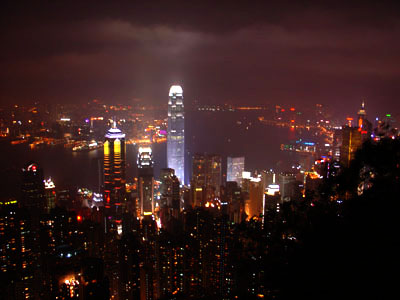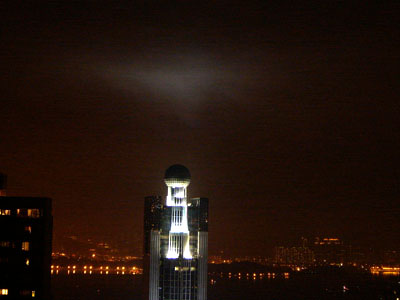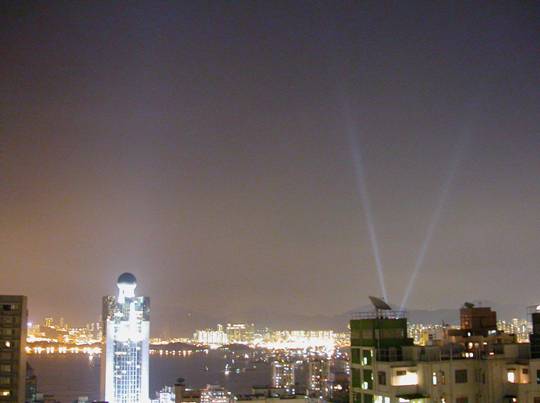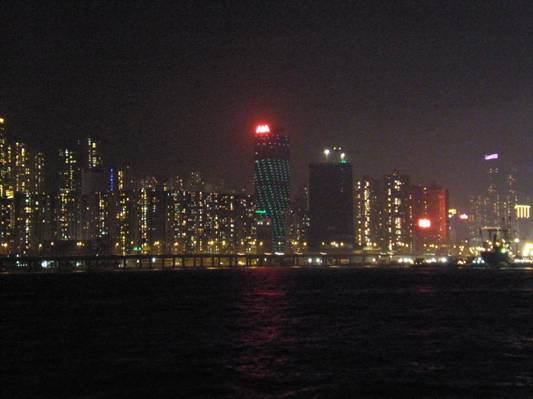How to Reduce Light Pollution?
The main cause of light pollution in Hong Kong is the excessive and improper use of artificial outdoor lightings. The ways to reduce the light pollution include reducing as many useless outdoor lighting as possible, modifying the existing lightings and redesigning them to become more dark-sky friendly, and choosing astronomical-friendly lighting sources.
Reduce Abuse of Outdoor Lightings
The rule of thumb is using lighting reasonably: do not set up unnecessary lighting and turn off lights which are not in use. We are not implying that you should live in the dark, rather just turn off the light when you leave a room can simply achieve the target. Turning off the neon signboards on the streets at midnight, reducing the hours of floodlight on golf courses, road lights in country parks and decorative lights on Tsing Ma Bridge are all possible ways being considered by government and organizations.
Turing off outdoor lightings at mid-night helps in reducing light pollution? If you have experience in star-grazing on Cheung Chau, you may noticed that by turning off the extensive lightings of the football court near Kwun Yam Beach, the strongest light pollution source among the island, at 11pm, many stars and even the Milky Way will emerge out immediately due to the dramatically reduction of light pollution. In 1996 during the brightened of comet Hyakutake, Ministry of the Environment of Government of Japan guided japanese to turn off the lights and so the night sky was 1.5 magnitude dimmer.
Modifying the Existing Lightings
Some of the outdoor lightings in Kong Hong, for example street lamps and lighting decorations on buildings' walls, have poor designs in term of dark-sky friendly. For street lamps, their main purpose is for security and guiding by illuminating the road. However their lampshades are poorly designed so that a portion of light energy is scattering up instead of down. Upward lighting is useless and wasteful, and also causes light pollution.
The better design of lampshades, like the so-called "Full-Cut-Off Lighting" or "Down Lighting", should focus the light energy to 0 to 65 degrees downward, meaning that minimum light is pointing upward and hence reduce light pollution.
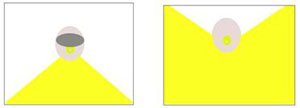
Left: The design of Full-Cut-Off Lighting;Right: The design of non-Full-Cut-Off Lighting.
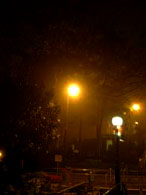
Most of the street lamps in Hong Kong hadn't blocked the light shining upward: from the picture we know that the tree above the lamp is illumined
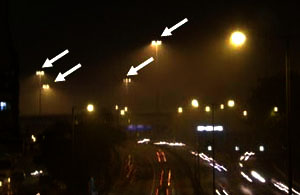
Part of the street lamps in Hong Kong equipped with the properties of full-cut-off: pointed lamps show how the full-cut-off reduced the upward shine.
Design Lightings to Become more Dark-Sky Friendly
Some of the outdoor lighting decorations on buildings' walls in Hong Kong painstakingly focused the lightings to the sky. Their designs surely increased the light pollution! Reporters asked why there are extensive up-lighting beams at night at the roof top of a skyscraper at Central. The designer replied that he would like to use the upward beams to being out "Heaven and human are the one" concepts. From our point of view, this skyscraper not only cannot achieve the concept, but the lightings also masked up the starry night and separated heaven and human!
1. At night, Two International Finance Center in Central likes a huge torch. The light emitted by the building causes serious light pollution and wastes many energy.
2. Another "huge torch" near Sheung Wan equips upward outdoor lightings. It is easy to see that the clouds just above the building are brightened and reflects human light and cause light pollution.
3. Apart from tall buildings, construction sites also installed extensive upward lightings. Taken at the middle of 2006, two light beams emitted from a construction sites in Tai Kok Tsui are clear in this picture at the right hand side.
4. On the other hand, some designers considered light pollution in their designs of lighting decorations of buildings' walls. They designed fascinating decorations without enhancing light pollution. A commercial building (middle) at North Point is dark-sky friendly.
Choosing Astronomical-friendly Lighting Sources
From the light-polluted sky spectra, astronomers discovered NaD (a chemical form of sodium) and Hg (element mercury) emission lines. They originated from artificial high pressure sodium lamps and mercury-contained fluorescent lamp. These emission lines located within the range of visible light and affect ground-base optical astronomical observations. Low pressure sodium lamps are better for astronomical observations. It is because the emission lines of low pressure sodium lamps occupy a small portion in visible spectrum only. Astronomers can easily filter out its lines by applying filters, etc.
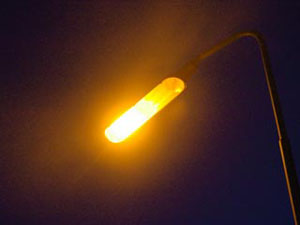
Sodium lamps
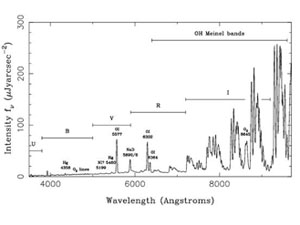
(From 'La Palma night-sky brightness', Isaac Newton Group. Credits: Chris R. Benn)
Spectrum of a moonless La-Palma sky taken with the William Herschel telescope on March 1991. Several features of airglow can be seen in this spectrum of the night sky, such as the emission from neutral Oxygen atom (labeled by OI), and Oxygen molecule (O2). Several lines are caused by light pollution, most notably the emission lines from sodium-D (NaD) and mercury (Hg). The range of the U, B, V, R, and I filter passbands are also shown.
Saving Energy
Saving energy and reducing light pollution can both be achieved by turning off useless lightings. According to the statistic from International Dark-Sky Association, 30% of outdoor lightings in U.S. are pointing upward. It wasted more than 1.5 billions of energy and 6 millions of coals! Global warming due to the combustion of fossil fuel is hence enhanced and degraded our environment further more.
There are hundred thousand street lamps all over Hong Kong. Using suitable lampshades that focus light downward would improve the light pollution and save a huge sum on lighting costs by replacing light bulbs with lower power consumption. The increase of lighting efficiency means energy save.
Hong Kong environmental organizations conducted a "Turning Off lightings" campaign on 8 August 2007. This campaign invited people to turn off their lightings at night for several minutes. The campaign also awakened people on environmental protection and serious air pollution issues of Hong Kong. The government however was not support the campaign and worried that the campaign will affect the commercial activities and tourism.
Overseas "Turning Off lightings" campaigns had good responds on the contrary. The "Earth Hour" campaign, for example, in Sydney in March 2007 successfully invited 2 millions people turned off their lightings for an hour at night. The campaign resulted in 10.2% of reduction in energy consumption and promoted the messages of prevent global warming.
We know how to protect our natural environment by avoiding use of plastic bags, saving electricity and paper. We should follow the ways to reduce light pollution as well.

